Best camera phones 2024: smartphone cameras for perfect shots
Check out the best camera phones for pro-level smartphone photography
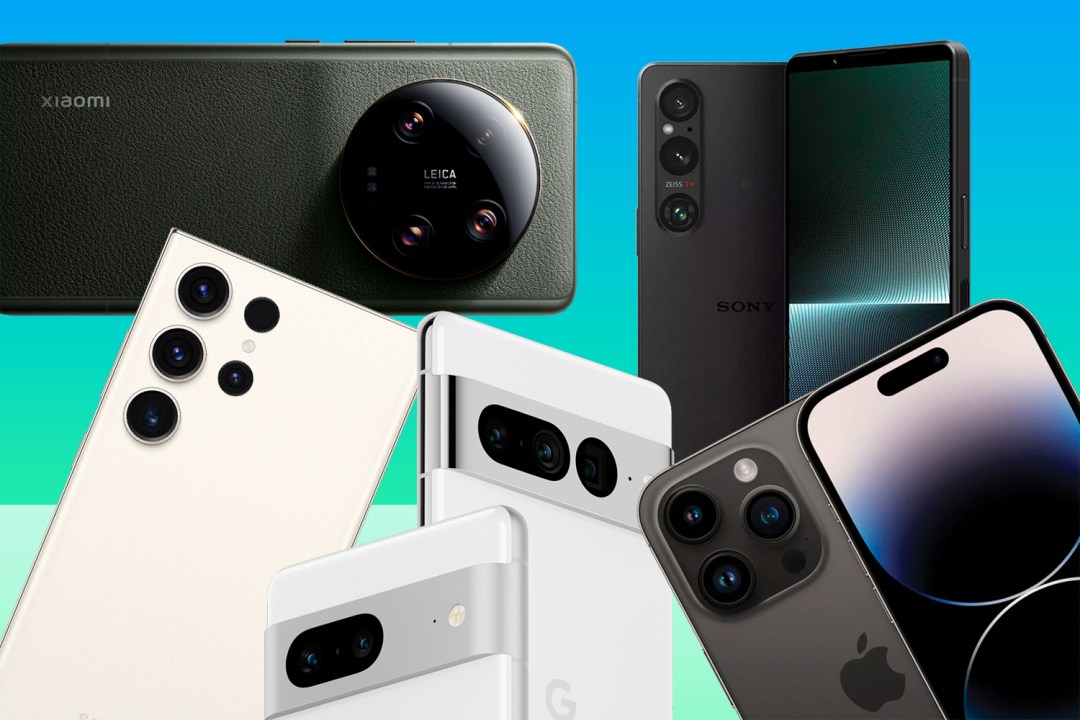
If you’re after the best camera phone, you’re not alone. Snapping up one of the best smartphones for photography is something that more of us are doing, as the camera remains one of the most important features — along with battery life — for most people. Thankfully, with each upcoming phone upgrade, comes a whole range of new camera specs and features.
The trouble is, there are thousands of handsets out there from budget to super-premium, and every entry on our best smartphones list promises to provide a great camera experience. The reality, of course, is that not all smartphones are made equal, especially when it comes to camera performance. In fact, with so many similar handsets out there, a smartphone’s camera is one of the main differentiating factors between them.
With all that said, we’ve rounded up some of the best top-tier smartphone cameras for photography currently available, based on years of expertise. If you’re after the best cameraphone, look no further than this lot…
What are the best camera phones?
Before we crack on with the full list, here’s a look at our four top choices:
While each individual camera on the Samsung Galaxy S24 Ultra (buy now) might not necessarily be the absolute best in class, they’re still superb and up there with the very best. What makes it shine overall though, is its flexibility, thanks to an incredible 10x optical zoom. This is pretty much unmatched by most of the competition, meaning that with the S24 Ultra in your pocket, you’ll be ready for practically any photography scenario you can think of.
The Google Pixel 8 Pro (buy now) may not have all the bells and whistles of the S24 Ultra, but what it lacks in lenses and zoom, it makes for in rock-solid picture-taking skills. It’s easy to get a good image with the Pixel 8 – point, shoot, and let Google’s image processing do the rest.
The Apple iPhone 15 Pro Max (buy now) (and Pro) represent the pinnacle of iPhone camera tech, with a 48MP main sensor and 5x periscope telephoto lens stealing the spotlight. With crisp, detailed results, and the best night photography ever seen on an iPhone, Apple remains one of the best smartphone camera ports of call for most people. Unless, of course, you’re strictly an Android user.
The Google Pixel 7a (buy now) may only have a dual-camera setup, but its results are superb, thanks to a combination of hardware, bolstered by Google’s top-notch AI-powered algorithms which squeeze brilliant results out with each press of the shutter button. With great shots in bright and dim conditions, the Pixel 7a represents the best bang-for-buck smartphone camera currently available.
The best camera phones you can buy today:

1. Samsung Galaxy S24 Ultra
Stuff Verdict
The Galaxy S24 Ultra is another epic Samsung flagship. New materials and screen upgrades go a long way, while the AI additions are perfect for productivity
Pros
- Titanium frame and Gorilla Armor glass set new toughness standards
- Unrivalled performance from Snapdragon 8 Gen 3 For Galaxy
- On-device AI is genuinely useful
Cons
- Cameras haven’t progressed much in twelve months
- Missed the boat for Qi2 charging
- As expensive as non-folding flagships get
| Samsung Galaxy S24 Ultra specs | |
|---|---|
| Screen | 6.8in, 3200×1440 AMOLED w/ 1-120Hz LTPO adaptive refresh, 2600 nits |
| CPU | Qualcomm Snapdragon 8 Gen 3 For Galaxy |
| Memory | 12GB RAM |
| Cameras | 200MP, f/1.7 main w/ Quad pixel AF, OIS + 50MP, f/3.4 periscope zoom w/ dual pixel AF, OIS, 5x optical zoom + 10MP, f/2.4 zoom w/ dual pixel AF, OIS, 3x optical zoom + 12MP, f/2.2 ultrawide rear 12MP, f/2.2 front w. dual pixel AF |
| Storage | 256GB/512GB/1TB on-board |
| Operating system | ANdroid 14 w/ OneUI 6.1 |
| Battery | 5000mAh w/ 45W wired, 15W wireless charging |
| Dimensions | 162x79x8.6mm, 232g |
With a 50MP main snapper, 10MP telephoto and 12MP ultrawide, the Galaxy S24’s cameras are effectively now three years old. The lead camera keeps its f/1.8 aperture lens, dual pixel autofocus tech and optical image stabilisation; the 3x optical zoom telephoto tops out at f/2.4, with PDAF and OIS; and the ultrawide sticks with f/2.2 glass. The exact same setup first appeared on the Galaxy S22.
Samsung claims the S24 Ultra’s shooting experience is unique thanks to an imaging NPU (neural processing unit) — and our review confirms it. This is the best Samsung smartphone camera experience to date, and one of the best money can currently buy.
It’s almost a given that shots in both bright and dark conditions are excellent, with the combination of Samsung’s software and hardware managing to turn day into night with apparent ease. Where the S24 Ultra really stands out though, is its sheer flexibility, thanks to that incredibly generous 10x optical zoom, made possible by its periscope camera setup. It’s so good, in fact, that we even managed to capture a detailed shot of the moon at 85x zoom, which is a feat no other smartphone on this list can come close to matching.
Its superb all-around performance, coupled with extra tricks like an amazing zoom, places the S24 Ultra among the best smartphones for photography in any situation.
- Read more: Samsung Galaxy S24 Ultra review
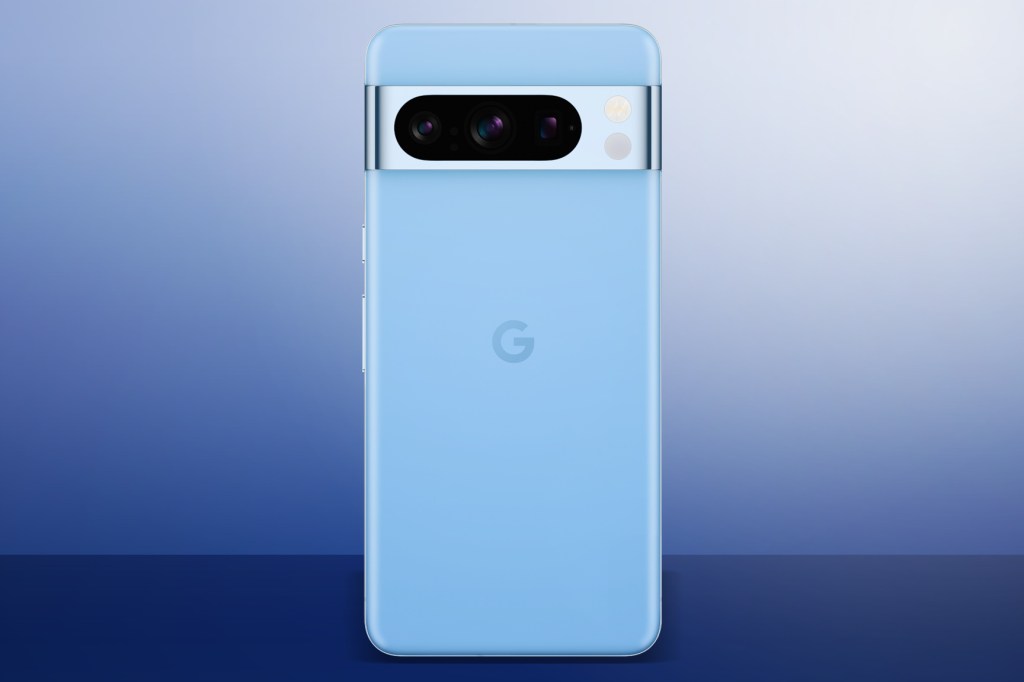
2. Google Pixel 8 Pro
Stuff Verdict
It continues Google’s run of phenomenal phone photography and is more AI-assisted than ever, but the 8 Pro isn’t a value champ like previous Pixels
Pros
- Fantastic photos in all lighting
- Sharper styling goes far in justifying premium price
- Android’s AI upgrades are a sign of things to come
Cons
- Higher price makes rivals more tempting
- Battery life and charging speeds still merely OK for a flagship
| Google Pixel 8 Pro specs | |
|---|---|
| Screen | 6.7in, 2992×1344 OLED w/ 1-120Hz, HDR10+ |
| CPU | Google Tensor G3 nine-core |
| Memory | 12GB RAM |
| Cameras | 50MP, f/1.7 w/ multi-directional PDAF, laser AF, OIS 48MP, f/2.8 telelphoto w/ 5x optical zoom, dual pixel PDAF, OIS 48MP, f/2.0 ultrawide w/ dual pixel PDAF 10.5MP, f/2.2 front w/ autofocus |
| Storage | 128/256/512GB, 1TB (US only) |
| Operating system | Android 14 |
| Battery | 5050mAh |
| Dimensions | 163x77x8.8mm, 213g |
Google hasn’t quite given up all pretences of the Pro-grade Pixel being an ‘affordable’ flagship, but the Pixel 8 Pro’s price hike certainly pushes it further into premium territory than ever before. It brings suitably high-end styling, an exceptionally bright OLED display and a Tensor G3 processor that promises on-device generational AI wallpapers (among other machine-learning skills).
It’s the rear camera trio that continues to set the Pixel 8 Pro apart, though. The 50MP main sensor takes astonishingly clean and detailed snaps in almost all lighting conditions, the ultrawide lens has improved macro focusing abilities for extreme close-ups, and the 48MP telephoto uses a periscope lens to deliver genuinely impressive 5x optical zoom. Add in the AI-assisted Best Take and Magic Editor tools, which let you swap faces and move subjects around the frame after you’ve tapped the shutter button, and there’s little else like it on the market right now.
- Read more: Google Pixel 8 Pro review
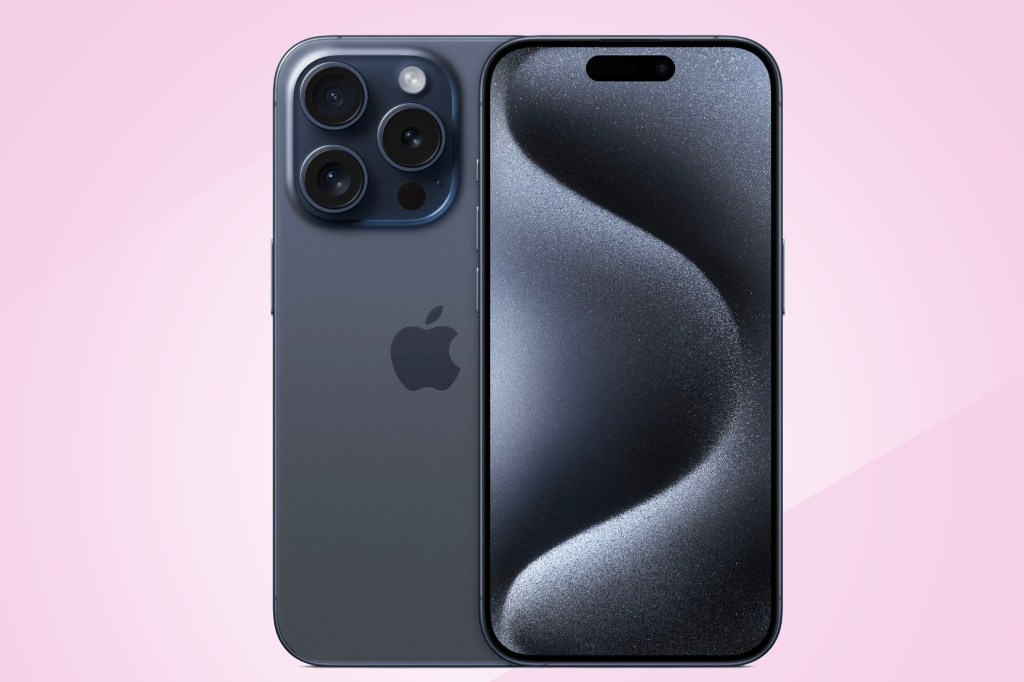
3. Apple iPhone 15 Pro Max
Stuff Verdict
The kind of advance that more makes you sagely nod approval rather than whoop for joy, but you’d have to be joyless yourself to not love the new camera smarts and the potential from USB-C
Pros
- Great camera improvements
- USB-C connectivity
- Lighter and nicer to hold
- Will get upgrades for 5+ years
Cons
- USB 3 rather than Thunderbolt
- No desktop mode
| Apple iPhone 15 Pro Max specs | |
|---|---|
| Colours | Natural Titanium/Blue Titanium/White Titanium/Black Titanium |
| Display | 6.7in 2796×1290 OLED HDR at 460ppi |
| Processor | A17 Pro |
| RAM | 8GB |
| Storage | 256GB/512GB/1TB |
| OS | iOS 17 |
| Cameras | 48MP ƒ/1.78 main, 12MP ƒ/2.2 ultra wide, 12MP ƒ/2.8 telephoto (5× optical zoom in) rear; 12MP ƒ/1.9 front |
| Battery | 4,441 mAh (est.) |
| Dimensions | 76.7×159.9×8.25mm (3.02×6.29×0.32in) |
| Weight | 221g (7.81oz) |
| Connectivity | USB-C (supports charging, DisplayPort, and USB 3) |
Apple’s iPhone cameras have been top-notch for years, and the iPhone 15 Pro Max is no exception, bringing with it a couple of key improvements that make it one of the best smartphone cameras in the world right now. A triple-camera affair made up of wide, ultrawide, and telephoto lenses, it has the show-stealing 48MP seen on last year’s top-tier model. The result is even clearer images with accurate colours and lighting, with an improvement in low-light photography to boot.
The biggest improvement for the Pro Max is a new periscope telephoto lens, which provides 5x optical zoom abilities up there with the very best smartphones. Elsewhere, you’ll find Apple’s Photonic Engine which has been upgraded to work even better software magic to improve shots in mid and low-light settings.
Ultimately, this is easily the best cameraphone Apple has ever made. If you want to sacrifice a little battery life and screen size then you can also snap up the cheaper iPhone 15 Pro, which shares most of the same camera features as its Max brother – you just have to make do with a 3x zoom lens instead.
- Read more: Apple iPhone 15 Pro Max review
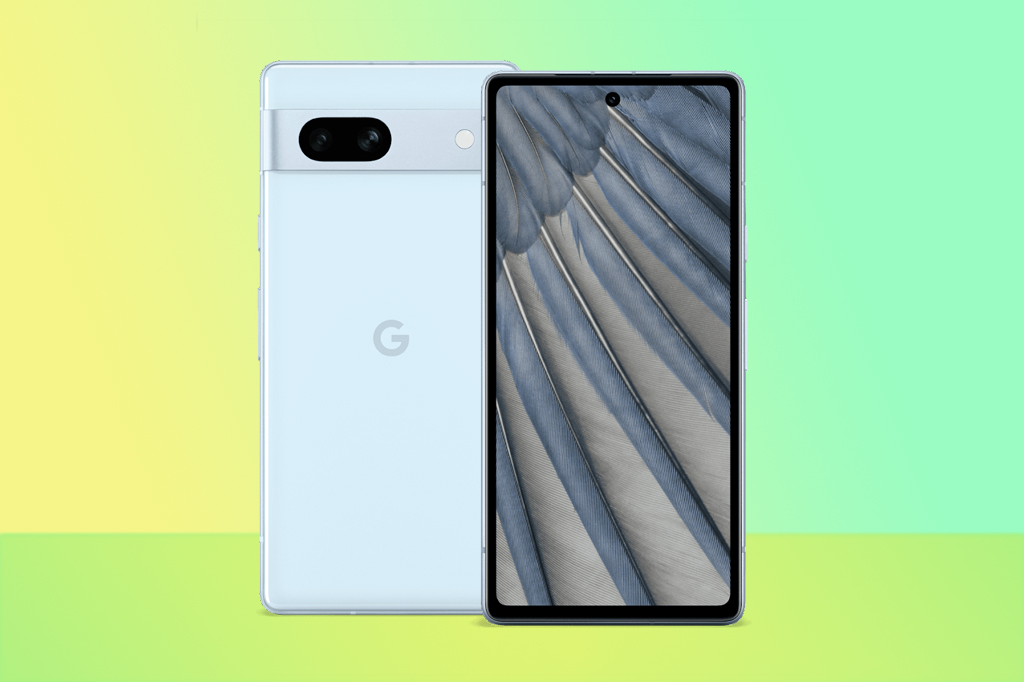
4. Google Pixel 7a
Stuff Verdict
Gains features missing from its predecessor, while staying fast, long-lasting and able to take a killer photo. The Pixel 7a is the mid-range Android phone to beat.
Pros
- Fantastic still images for a mid-range phone
- Performance punches above its price bracket
- Slick design and strong build
Cons
- Price bump over last year’s effort
- Charging speeds remain behind rivals
| Google Pixel 7a specs | |
|---|---|
| Screen | 6.1in, 2400×1080 gOLED w/ 90Hz |
| CPU | Google Tensor G2 octa-core |
| Memory | 8GB RAM |
| Cameras | 64MP, f/1.9 main w/ OIS + 13MP,f/2.2 ultrawide rear 13MP, f/2.2 front |
| Storage | 128GB on-board |
| Operating system | Android 13 |
| Battery | 4385mAh w/ 18W wired, 7.5W wireless charging |
| Dimensions | 152x73x9.0mm, 193g |
Google has taken the Pixel 7a a bit more upmarket than previous A-series models, with features borrowed wholesale from the pricier Pixel 7. Its 64MP main camera sensor is bespoke, but the pixel-binning smarts used to improve low-light shots are very much in keeping. Combined with the firm’s typically excellent software, it’s one of the best bang-for-buck photography experiences around.
Powerful algorithms squeeze the most out of dual snappers. Shots from both cameras are stuffed with detail, wonderfully exposed, with no hint of unsightly noise, and they perform well in dim conditions too. Autofocus is quick, and auto HDR does a brilliant job of exposing bright skies without losing detail in shadows. Skin tones are impressive as well, with Google using a dedicated Real Tone algorithm for more accurate results.
There’s no dedicated telephoto (aka, zoom) camera, which is to be expected at this price, but considering you still get the same software tricks found in the more expensive Pixel 7 Pro (like Magic Eraser), it’s hard to complain. Easily one of the best cameraphones around for the money you’re paying.
- Read more: Google Pixel 7a review
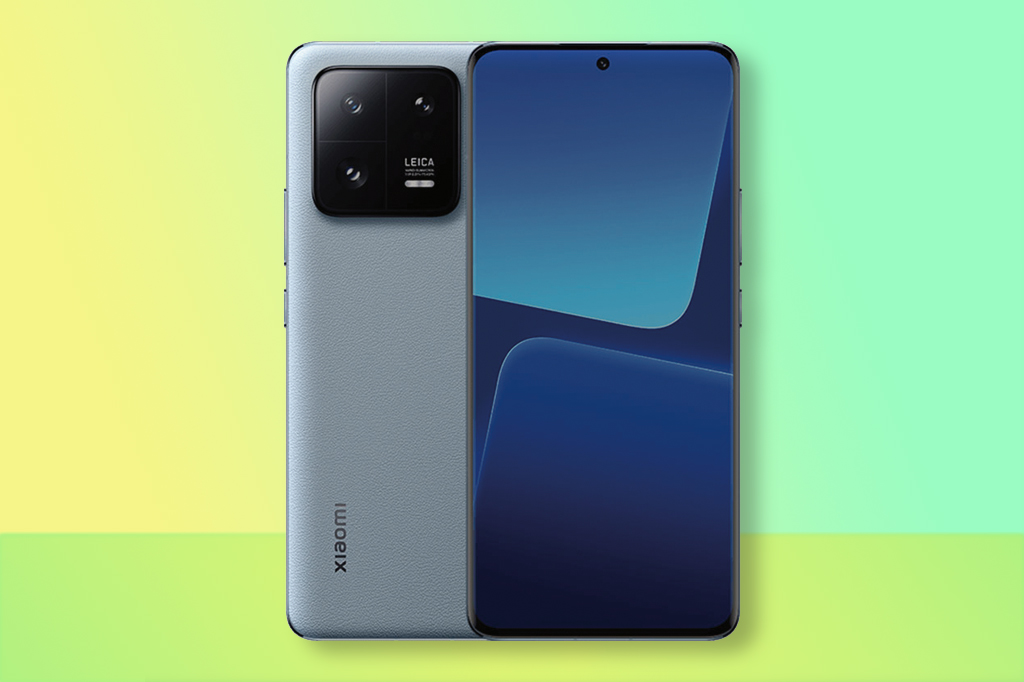
5. Xiaomi 13 Pro
Stuff Verdict
A brilliantly capable flagship phone with outstanding photographic ability. One of the highlights of the year so far
Pros
- Impeccable image quality from every camera
- Flagship performance and decent battery life
- Top-tier curved AMOLED screen
Cons
- MIUI can still be heavy-handed with power optimisation
- Quite a chunky handset
- Polished finish gets mucky fast
| Xiaomi 13 Pro specs | |
|---|---|
| Screen | 6.73in, 3200×1440 AMOLED w/ 120Hz, HDR10+/Dolby Vision/HLG |
| CPU | Qualcomm Snapdragon 8 Gen 2 octa-core |
| Memory | 12GB RAM |
| Cameras | 50MP, 1in, f/1.9 w/ OIS + 50MP, f/2.0 telephoto w/ OIS + 50MP, f/2.2 ultrawide rear 32MP, f/2.0 front |
| Storage | 256GB on-board |
| Operating system | Android 13 w/ MIUI 14 |
| Battery | 4820mAh w/ 120W wired charging, 50W wireless charging, reverse charging |
| Dimensions | 163x75x8.4mm, 229g |
Xiaomi isn’t the only smartphone maker to have squeezed in a 1in camera sensor into its latest top-tier model – but it is currently the only one that will sell one globally. While Oppo and Vivo are content to stick in China, the Xiaomi 13 Pro can be picked up officially in Europe. A 1in sensor gives it impeccable bokeh, meaning all your portrait shots have dreamy depth blur, and the rest of the snappers are impressive too.
All three have 50MP pixel counts, the telephoto has a 3.2x zoom that bests both the Samsung and Apple alternatives, and the ultrawide doubles as macro lens. Leica image processing smarts also mean it takes gorgeous photos in almost all lighting. Few rivals are quite as accomplished.
It’s a fantastic phone everywhere else, with a bioceramic finish, high refresh rate OLED display, whip-crack quick Snapdragon 8 Gen 2 CPU and a beefy battery that’ll let you keep snapping for hours (or even days) at a time. It’s a premium device, and carries a premium price, but phone photographers should see it as a price worth paying.
- Read more: Xiaomi 13 Pro review
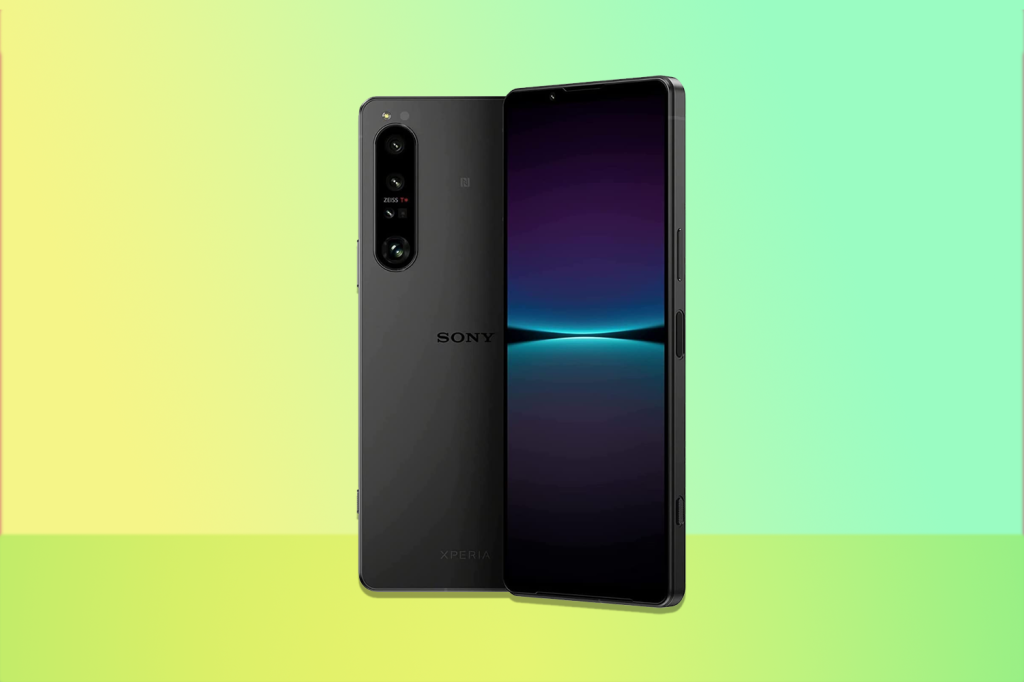
6. Sony Xperia 1 V
Stuff Verdict
This fan-favourite flagship doubles down on what made previous efforts so impressive, improving in all the right areas and debuting some genuinely clever continuous zoom camera tech
Pros
- Flexible, fast and capable cameras with impressive manual controls
- A true flagship in all other respects, from screen to performance
- Has all the features other phones have forgotten about
Cons
- Newbie snappers will only scratch the surface of what the cameras can do
- Gets toasty under load, to the point of throttling
- 4K resolution has limited use, and lacks dynamic refresh
| Sony Xperia 1 V specs | |
|---|---|
| Screen | 6.5in, 3840×1644 OLED w/ 120Hz refresh rate, 21:9 aspect ratio, HDR10+ |
| CPU | Qualcomm Snapdragon 8 Gen 1 octa-core |
| Memory | 12GB RAM |
| Cameras | 12MP, f/1.7, 24mm wide w dual pixel PDAF, OIS + 12MP, f/2.2, 16mm ultrawide w/ dual pixel PDAF + 12MP, f/2.3 85mm – f/2.8 125mm telephoto w/ dual pixel PDAF, OIS, 3.5x-5.2x continuous optical zoom + 0.3MP TOF 3D rear. 12MP, f/2.0, 24m front |
| Storage | 256GB on-board, microSD expansion |
| Operating system | Android 12 |
| Battery | 5000mAh non-removable w/ 30W wired charging, wireless charging, reverse wireless charging |
| Dimensions | 165x71x8.2mm, 185g |
Sony might be an expensive outlier in the smartphone world, overshadowed by the plethora of iPhones and other, cheaper Android handsets, but for enthusiast photographers and videographers, its premium handsets have always offered something a little different. The flagship Xperia 1 V is no exception, with a triple rear camera setup consisting of an all-new 52MP lead sensor, backed up by twin 12MP shooters. It’s far better in low light than its predecessor, while keeping the ridiculously fast focus – making it an ideal choice for those wanting to capture crisp shots of hyperactive children and/or pets.
Even better, its zoom lens is a variable affair, letting you dial in optical zoom levels from 3.5x to 5.2x. It’s a clever trick that will massively appeal to those looking to close the distance to their subjects without disturbing them or physically getting closer.
As expected from Sony handsets, you’ll get the very best out of its cameras when using the Pro mode, tweaking settings until you reach some seriously impressive results. It’s pricey, and not one for casual users who just want to point and shoot with AI-optimised results, but if you’ve got the patience and passion, this is one of the most unique, as well as best camera phones currently available.
- Read more: Sony Xperia 1 V review
